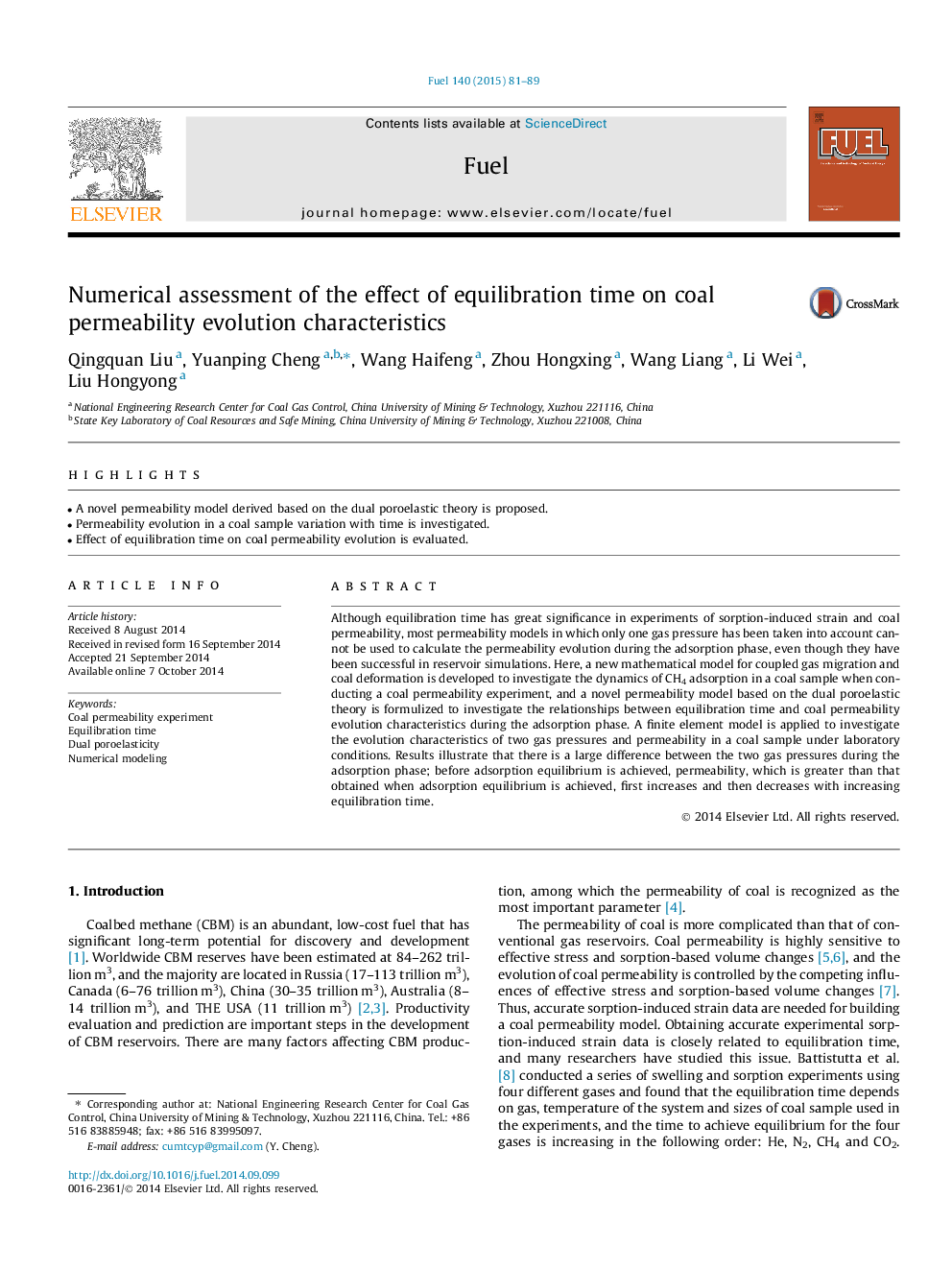| Article ID | Journal | Published Year | Pages | File Type |
|---|---|---|---|---|
| 6636131 | Fuel | 2015 | 9 Pages |
Abstract
Although equilibration time has great significance in experiments of sorption-induced strain and coal permeability, most permeability models in which only one gas pressure has been taken into account cannot be used to calculate the permeability evolution during the adsorption phase, even though they have been successful in reservoir simulations. Here, a new mathematical model for coupled gas migration and coal deformation is developed to investigate the dynamics of CH4 adsorption in a coal sample when conducting a coal permeability experiment, and a novel permeability model based on the dual poroelastic theory is formulized to investigate the relationships between equilibration time and coal permeability evolution characteristics during the adsorption phase. A finite element model is applied to investigate the evolution characteristics of two gas pressures and permeability in a coal sample under laboratory conditions. Results illustrate that there is a large difference between the two gas pressures during the adsorption phase; before adsorption equilibrium is achieved, permeability, which is greater than that obtained when adsorption equilibrium is achieved, first increases and then decreases with increasing equilibration time.
Related Topics
Physical Sciences and Engineering
Chemical Engineering
Chemical Engineering (General)
Authors
Qingquan Liu, Yuanping Cheng, Wang Haifeng, Zhou Hongxing, Wang Liang, Li Wei, Liu Hongyong,
